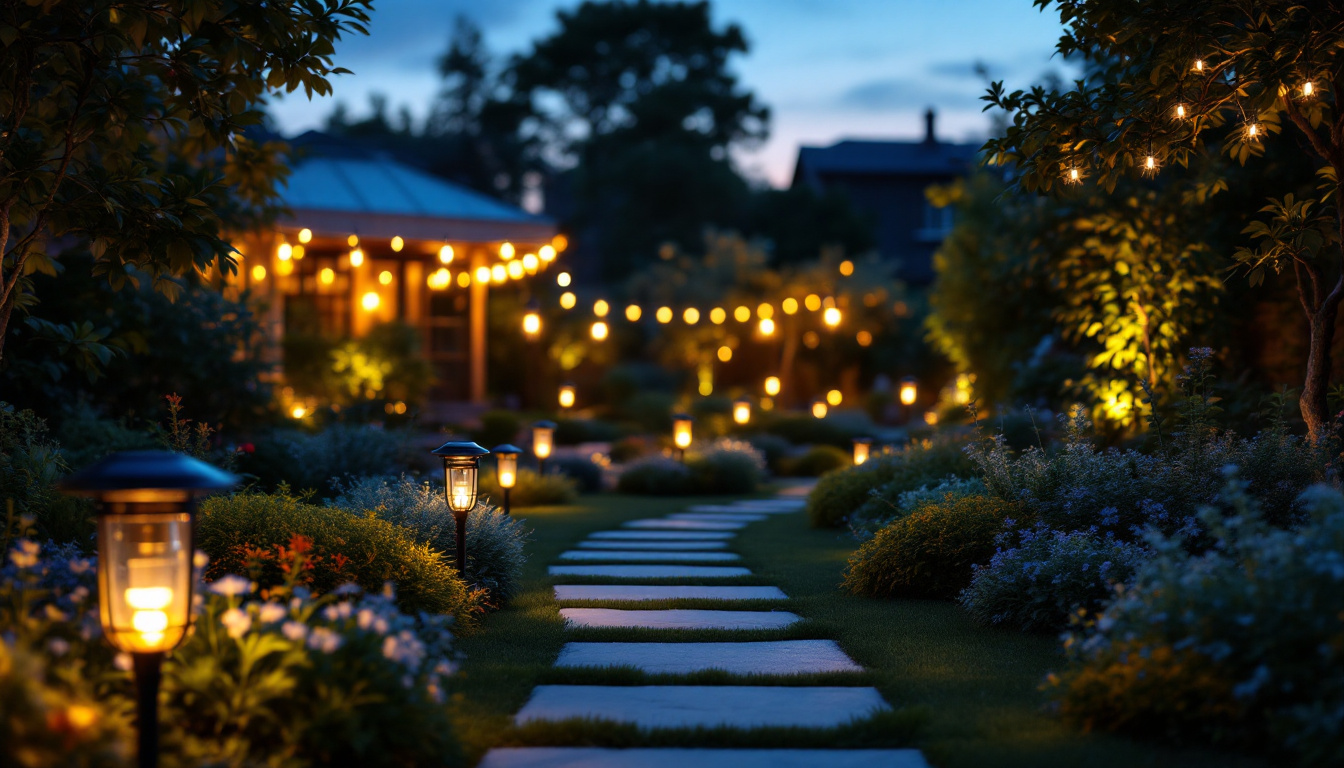
In the modern age of construction and renovation, energy efficiency has become a fundamental consideration in lighting design. Among the various lighting solutions available, LED technology stands out as a frontrunner in promoting sustainability and reducing energy consumption. One innovative application of LED technology is the integration of LED strips and panels into wall structures. This article delves into the concept of “LED in the wall,” exploring its benefits, installation practices, and design considerations for lighting contractors.
LED (Light Emitting Diode) technology has revolutionized the lighting industry. Unlike traditional incandescent and fluorescent bulbs, LEDs convert a higher percentage of energy into light rather than heat, making them significantly more efficient. This efficiency translates into lower energy bills and a reduced carbon footprint, aligning with the growing demand for sustainable building practices. As cities and communities strive to meet environmental goals, the adoption of LED technology is becoming a cornerstone of modern urban planning and infrastructure development.
One of the most compelling advantages of LED lighting is its energy efficiency. LEDs consume up to 75% less energy than incandescent bulbs and can last up to 25 times longer. This longevity not only reduces the frequency of replacements but also minimizes waste, making LEDs an environmentally friendly choice. For lighting contractors, promoting LED solutions can enhance client satisfaction and contribute to a greener future. Furthermore, the reduced heat output of LEDs means that they can be used in a variety of settings without the risk of overheating, making them ideal for enclosed fixtures and sensitive environments, such as museums and galleries where temperature control is crucial.
LEDs are incredibly versatile, allowing for creative applications in various settings. From residential homes to commercial spaces, the ability to integrate LEDs into walls opens up new avenues for design. Whether it’s ambient lighting, accent features, or task lighting, the adaptability of LED technology can meet diverse aesthetic and functional needs. Additionally, advancements in LED technology have led to the development of smart lighting systems that can be controlled via smartphones or voice-activated devices, further enhancing their usability. This integration of technology not only provides convenience but also allows users to customize their lighting experiences, adjusting brightness and color temperature to suit different moods and activities, from a cozy evening at home to a vibrant office environment. As a result, the rise of LED technology is not just about energy savings; it’s also about enhancing the quality of life through innovative design and smart solutions.
Integrating LED lighting into wall structures involves embedding LED strips or panels within the wall itself. This technique not only provides a sleek, modern look but also maximizes space and minimizes clutter. It is particularly beneficial in areas where traditional fixtures may not be feasible or desirable. Moreover, the versatility of LED technology allows for a variety of color temperatures and brightness levels, enabling homeowners and designers to create the perfect ambiance for any room.
There are several methods for incorporating LEDs into walls, each offering unique advantages. Recessed LED strips are commonly used to create a seamless look, while LED panels can serve as both decorative elements and effective light sources. Some installations even incorporate smart technology, allowing users to control brightness and color through mobile apps or voice commands. Understanding these options allows contractors to tailor solutions to their clients’ specific needs, ensuring that the final design not only meets functional requirements but also enhances the overall aesthetic of the space.
Wall-integrated LEDs offer numerous benefits beyond aesthetics. They provide uniform lighting, reducing shadows and enhancing visibility. Additionally, this installation method can improve energy efficiency by allowing for better placement of light sources, reducing the need for multiple fixtures. The result is a cleaner, more streamlined appearance that aligns with contemporary design trends. Furthermore, the longevity of LED technology means that these installations require less frequent maintenance and replacement, making them a cost-effective choice in the long run. The ability to customize the lighting to suit different activities—such as bright, focused light for reading or softer, ambient light for relaxation—adds to their appeal, making them a practical solution for both residential and commercial spaces.
While the advantages of LED in the wall are clear, proper installation is crucial to ensure optimal performance and longevity. Lighting contractors must pay attention to several key factors during the installation process.
Before installation, it is essential to assess the electrical requirements of the LED system. LEDs typically operate at low voltage, necessitating the use of transformers or drivers. Ensuring that the electrical infrastructure can support these requirements is vital to prevent issues such as flickering or reduced lifespan. Additionally, it is important to verify that the wiring is adequately rated for the load and that circuit breakers are appropriately sized to handle the LED installation. This not only enhances safety but also ensures that the lighting operates smoothly without interruptions.
The placement and spacing of LED strips or panels within the wall can significantly impact the quality of light produced. Contractors should consider the intended use of the space and the desired lighting effect when determining placement. For example, in a living area, softer, ambient lighting may be preferred, while task-oriented spaces like kitchens may require brighter, more focused illumination. Furthermore, the angle of installation can also affect light distribution; mounting LEDs at a slight angle can create a more dynamic lighting effect, enhancing the overall aesthetic of the room. It is also advisable to consider the color temperature of the LEDs, as warmer tones can create a cozy atmosphere, while cooler tones may contribute to a more energetic environment.
Incorporating LED lighting into wall designs offers a unique opportunity for creativity. Lighting contractors can work closely with clients to develop customized solutions that enhance the overall aesthetic of the space.
One of the most effective ways to use LED wall lighting is to create ambiance. By strategically placing LED strips along architectural features or behind furniture, contractors can achieve a warm, inviting atmosphere. Dimming capabilities can further enhance this effect, allowing clients to adjust the lighting to suit different moods and occasions.
LEDs can also be used to accentuate architectural features within a space. Whether it’s highlighting a textured wall, showcasing artwork, or illuminating a unique ceiling design, the flexibility of LED lighting allows for a range of creative applications. This not only adds visual interest but also enhances the overall design narrative of the space.
Despite the many advantages of LED in the wall, there are challenges that lighting contractors may encounter during installation and design. Being aware of these challenges and having solutions at hand can streamline the process and ensure client satisfaction.
Although LEDs produce less heat than traditional bulbs, they can still generate heat that needs to be managed effectively. Proper ventilation and heat dissipation methods should be considered during installation to prevent overheating, which can lead to reduced performance and lifespan. Using heat sinks or ensuring adequate airflow can mitigate this issue.
Integrating LED wall lighting with existing electrical systems or smart home technologies can present compatibility challenges. Contractors should be familiar with various control systems and ensure that the LED products chosen are compatible with the client’s existing setup. This knowledge can enhance the overall functionality and user experience.
The future of LED wall lighting is promising, with ongoing advancements in technology and design. As lighting contractors, staying informed about emerging trends can provide a competitive edge and enable the delivery of innovative solutions to clients.
Smart lighting is becoming increasingly popular, allowing users to control their lighting systems via smartphones or voice commands. Integrating LED wall lighting with smart technology can enhance convenience and energy efficiency. Contractors should explore options for smart controls, such as dimmers, color-changing capabilities, and scheduling features, to offer clients a modern lighting experience.
Advancements in LED technology are also improving color rendering capabilities. High Color Rendering Index (CRI) LEDs can accurately reproduce colors, making them ideal for spaces where color accuracy is essential, such as art galleries or retail environments. Contractors should consider the CRI of LED products when selecting fixtures for specific applications.
LED in the wall represents a significant advancement in energy-efficient lighting design. By understanding the benefits, installation considerations, and design possibilities, lighting contractors can effectively implement this innovative solution in their projects. As the demand for sustainable and aesthetically pleasing lighting continues to grow, embracing LED technology will not only enhance the quality of spaces but also contribute to a more sustainable future.
In a world increasingly focused on energy efficiency and design innovation, LED wall lighting stands out as a must-know for lighting contractors. By leveraging the advantages of this technology, contractors can provide exceptional value to their clients while promoting environmentally responsible practices. The future of lighting is bright, and LED in the wall is at the forefront of this evolution.
Ready to elevate your lighting projects with the efficiency and elegance of LED in the wall? LumenWholesale is here to support your journey towards innovative and sustainable lighting solutions. With our extensive selection of spec-grade lighting products, you can trust in the reliability and performance that your projects demand. Say goodbye to inflated markups and enjoy unbeatable wholesale prices, complemented by the convenience of free shipping on bulk orders. Don’t compromise on quality or value—choose LumenWholesale for the best in energy-efficient lighting design. Start browsing our collection now and discover the perfect lighting solutions for your needs at Wholesale Lighting at the Best Value.

Discover the benefits of 8ft LED shop lights with insights from expert lighting contractors.

Discover how 8-foot LED fixtures can revolutionize your lighting projects and boost your business.

Explore the pros and cons of garden solar lights compared to traditional alternatives in this insightful guide for lighting contractors.

Discover the essential guide for lighting contractors to master T5 light bulbs.